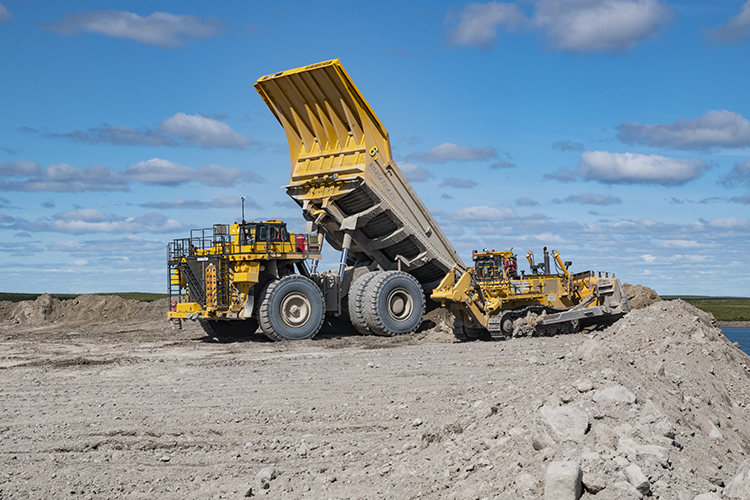Vacationers looking forward to a warm getaway this winter might applaud the strengthening Canadian dollar; not so most of Canada's mineral industry. The dollar's exchange rate in 2003 is up 17% against the U.S. currency, closing at noon Oct. 28 at $0.763 or US$1 for Cdn$ 1.31.
For anyone going south to beat the cold, this means their money will go farther at resort destinations. Walt Disney World will even take Canadian dollars at par if guests use their Visa credit card, according to the TV commercials running in prime time. The strong dollar will effectively cut the price of everything from hotel to souvenirs. This is all good news for travelers.
The bad news for Canada's mineral industry is that the strong dollar is cutting into profits. One reason is that most metals and minerals are sold globally in U.S. dollars, and Canadian producers are now getting smaller U.S. dollars for their output. Investment firm Merrill Lynch told a Reuters reporter, "The recent strength in the Canadian dollar versus the U.S. dollar is putting pressure on the earnings of Canadian mining companies with assets in Canada. Not surprising, companies with substantial assets in Canada are most affected."
The dollar's vigour is affecting all sectors of mineral productiongold, base metals and industrial minerals. According to Merrill Lynch the most affected companies are AGNICO-EAGLE, CAMBIOR, KINROSS GOLD, and TECK COMINCO. The most vulnerable is Agnico-Eagle with its reliance on the LaRonde gold mine in Quebec. BARRICK GOLD, with its currency hedges, appeared unaffected. Executives at ALCAN and POTASH CORP. are complaining about the dollar, too, reports Reuters.
The MINING ASSOCIATION OF CANADA (MAC), joining the Forest Products Association of Canada, the Canadian Chemical Producers Association and the Canadian Manufacturers & Exporters, expressed concern that the dollar is appreciating at a rate "out of step" with the Canadian economy. In a joint press release the associations noted that the dollar is at a seven-year high, but that the current rate of appreciation is not sustainable. Canada has lost over 60,000 factory jobs this year, a direct effect of the exchange rate.
"When the Canadian dollar changes faster than the economy, Canadians' jobs are lost," noted Avrim Lazar of FPAC.
"A higher exchange rate should be the result of a stronger, more competitive and productive economy," said Richard Patten of the CCPA.
Here is a gloomy prediction from Gordon Peeling of MAC: "Should the dollar remain at 75-cents US, real GDP could be more than 4% below forecast 2004 levels."
Imagine how an 80-cent dollar would drive down the economy.
For his part, Bank of Canada governor David Dodge told the Senate Banking, Trade and Commerce Committee last week that the Canadian economy should strengthen during the fourth quarter of this year and through next year. He said growth is expected to average a little over 3% in the last half of 2003 and 3.25% in 2004. "Stronger growth abroad should boost foreign demand for Canadian products," he said, "but this will be dampened by the higher value of the Canadian dollar."
At least Dodge is taking the problems of the rising dollar into account. Whether he could or should try to reverse the trend is another question.
Canadians headed for the beach this winter (if they still have jobs) shouldn't feel too guilty about the higher dollar. Canada's mining companies are well-managed by people who have business strategies available to counter a stronger dollar in the long term. But they are going to feel the profit pinch in the short term.





Comments